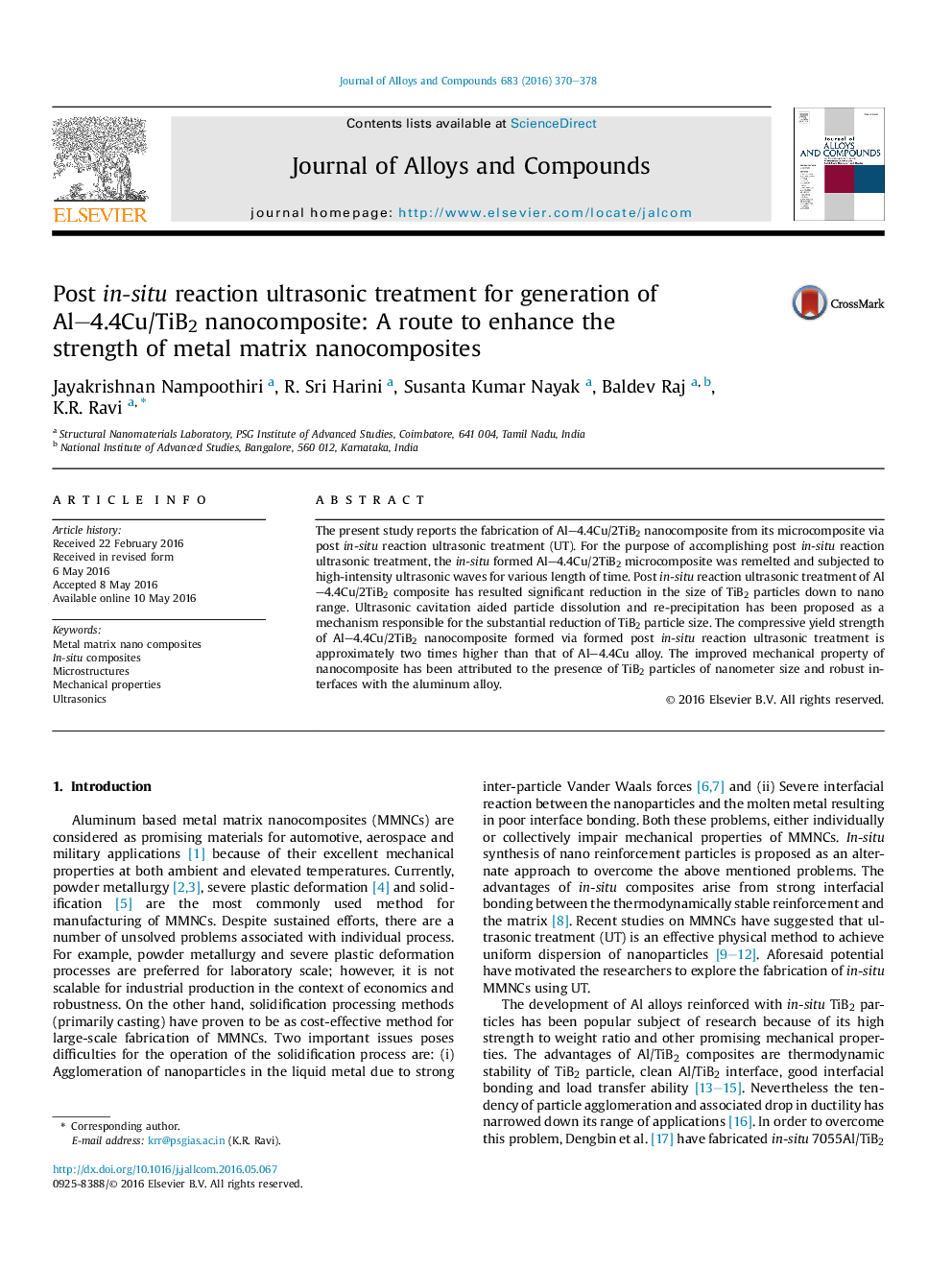| Article ID | Journal | Published Year | Pages | File Type |
|---|---|---|---|---|
| 1605477 | Journal of Alloys and Compounds | 2016 | 9 Pages |
•Ultrasonic treatment (UT) of Al–4.4Cu/2TiB2 composite has generated nano size TiB2 particles.•Particle dissolution and re-precipitation is proposed as reason for nano TiB2 particle formation.•Increase of ultrasonic power input and treatment time has increased reduction in TiB2 particle size.•Yield strength of Al–4.4Cu/2TiB2 composite after UT is ∼2 fold higher than Al–4.4Cu alloy.
The present study reports the fabrication of Al–4.4Cu/2TiB2 nanocomposite from its microcomposite via post in-situ reaction ultrasonic treatment (UT). For the purpose of accomplishing post in-situ reaction ultrasonic treatment, the in-situ formed Al–4.4Cu/2TiB2 microcomposite was remelted and subjected to high-intensity ultrasonic waves for various length of time. Post in-situ reaction ultrasonic treatment of Al–4.4Cu/2TiB2 composite has resulted significant reduction in the size of TiB2 particles down to nano range. Ultrasonic cavitation aided particle dissolution and re-precipitation has been proposed as a mechanism responsible for the substantial reduction of TiB2 particle size. The compressive yield strength of Al–4.4Cu/2TiB2 nanocomposite formed via formed post in-situ reaction ultrasonic treatment is approximately two times higher than that of Al–4.4Cu alloy. The improved mechanical property of nanocomposite has been attributed to the presence of TiB2 particles of nanometer size and robust interfaces with the aluminum alloy.
Graphical abstractFigure optionsDownload full-size imageDownload as PowerPoint slide
